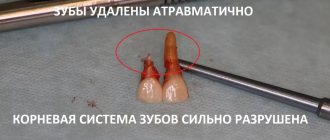Types of postoperative scars
Keloid.
A lumpy scar made of overgrown connective tissue that is red or bluish in color. It looks like a tumor or a mushroom cap. The size of the keloid scar is larger than the wound itself, it hurts, itches, and sometimes pulsates.
Hypertrophic.
Outwardly similar to a keloid, but its size does not extend beyond the wound. A hypertrophic scar does not cause any discomfort and lightens over time.
Normotrophic.
A well-healing scar is initially convex and reddened, after 3 months it becomes almost invisible, there is no sensitivity.
Wound Dressing Technique: 5 Basic Steps
- Prepare the necessary materials . Before starting the procedure, the first aid kit must be fully equipped: contain bandages, plasters, antiseptics, sterile gloves and other items prescribed by the doctor. It is also necessary to disinfect the surfaces on which the products for the procedure will be laid out during the process.
- Remove the old bandage . With one gloved hand you need to hold the skin around the wound, and with the other, carefully remove the gauze. If the bandage is dry, it should first be soaked with a solution of furatsilin or hydrogen peroxide. Used materials must be placed in a bag.
- Treat the wound . Remains of gauze, bandages, cotton wool, threads should be removed from the wound, and then purulent discharge should be removed. If bleeding resumes, apply a gauze pad to the wound and hold for at least five minutes. Then rinse the surface with hydrogen peroxide. If bleeding reoccurs after one or two dressing changes, you should consult a doctor.
- Apply a new dressing to a clean, dry, exposed area . It is pre-impregnated with antibacterial and wound-healing agents prescribed by the doctor.
- Secure the bandage . The bandage should prevent it from moving, but not put too much pressure on the damaged area.
During each procedure, it is necessary to check the damaged area for infections. Signs of infection are: severe suppuration, unpleasant odor, discoloration. If any of the symptoms are present, you should seek medical help. The doctor will prescribe antibiotics or other medications to help get rid of the infection.
Complications of postoperative scars
Ligature fistula of a postoperative scar.
At the site of the suture, an inflamed hollow canal (hole) is formed, from which pus, sometimes urine and feces, are released. The cause of the complication is infection entering the body through the suture or an allergy to the threads with which the wound was sutured. The fistula can develop into an abscess, cellulitis or sepsis.
Infiltrate of postoperative scar.
This is a seal at the site of the suture, inside of which pus accumulates. The infiltrate is very painful to the touch, hot, red. Occurs due to infection of the suture.
Granuloma of a postoperative scar.
At the site of the scar, as a reaction to foreign bodies (suture threads), granulomas appear - nodules of dense tissue up to 2 mm in diameter, sometimes they contain pus. Granulomas are accompanied by an increase in the patient's body temperature.
Endometriosis of postoperative scars.
Occurs after gynecological operations on the uterine cavity, due to endometrial particles entering the wound. Patients feel pain in the scar area, blood is released from the suture, and dense nodules appear on the scar.
Treatment of complications of postoperative scars can be either surgical or conservative. Ligature fistula and infiltration usually require surgical intervention and re-suturing of the wound. Granulomas most often resolve on their own, but require aseptic treatment and medical supervision. When treating scar endometriosis, hormonal medications are prescribed.
Aesthetic surgery methods are used to remove keloid scars.
Postoperative bleeding
Bleeding after surgery is a serious complication that can be fatal. Therefore, this condition requires immediate medical attention.
There are acute blood loss (mild), massive blood loss syndrome (moderate) and hemorrhagic shock (severe).
The main clinical criteria for assessing the patient’s condition and the degree of blood loss are hemodynamic indicators (blood pressure (BP), heart rate (HR), central venous pressure), hematocrit and hemoglobin levels.
Postoperative bleeding can be early or late.
Early blood loss occurs in the first few hours after surgery. As a rule, it develops against the background of a blood clotting disorder, due to a disorder of water-electrolyte balance or the action of narcotic drugs. Late bleeding occurs after several days or even weeks and is usually caused by infection in the wound or suture dehiscence. In any case, the patient’s life is in danger and urgent medical attention is required.
Causes of postoperative bleeding
- Arrosion of a blood vessel due to the onset of a purulent process. This complication occurs some time after the intervention.
- Dehiscence of sutures, slipping of the ligature from a large-diameter vessel. It is observed with incorrect suturing technique or the use of low-quality suture material.
- Blood clotting disorder.
- Infection.
Sometimes bleeding develops from small vessels that remain unstitched. This is possible when blood pressure decreases during surgery, causing the vessels to collapse.
Bleeding in the late postoperative period often develops due to purulent melting of tissue in the wound, disintegration of tumor tissue, and failure of sutures.
What types of bleeding are there?
- Arrosive - when the vascular wall is damaged due to the germination or disintegration of a neoplasm, a destructive or necrotic process (with tissue death).
- Diapedetic - with blood leaking through the vascular wall during scurvy, scarlet fever, malaria.
Classification by volume of blood loss:
- Lung 10-15% of circulating blood volume (CBV), up to 500 ml, hematocrit more than 30%
- Average 16-20% of blood volume, from 500 to 1000 ml, hematocrit more than 25%
- Severe 21-30% of bcc, from 1000 to 1500 ml, hematocrit less than 25%
- Massive >30% bcc, more than 1500 ml
- Lethal >50-60% of the volume of blood volume, more than 2500-3000 ml
- Absolutely lethal >60% of blood volume, more than 3000-3500 ml
Based on where the bleeding comes from:
- Venous – when the vein wall ruptures
- Arterial - from an artery
- Mixed - from different vessels
What are the symptoms of bleeding?
Common signs of internal bleeding are weakness, darkening or clouding of the eyes, drowsiness, dizziness, cold sweat, and thirst. Loss of consciousness is possible. The intensity of blood loss is determined by pulse rate, blood pressure and characteristic complaints of the patient. Also, as a rule, after surgery, a drainage is installed and there is a massive flow of blood through the drainage.
Minor blood loss often does not manifest itself in any way, but for some, the pulse increases slightly and the blood pressure drops slightly.
Manifestations of moderate bleeding: heart rate up to 100 beats per minute, decrease in systolic pressure to 80 mmHg. Art., moderate shortness of breath, dry mouth, cold hands and feet, cold sweat, dizziness, severe weakness, slow reactions, fainting.
With severe blood loss, symptoms are more pronounced. A drop in blood pressure of more than 80 mmHg is noted. Art., tachycardia more than 110 beats per minute, shortness of breath, hand tremors, excruciating thirst against the background of a decrease in the volume of urine excreted, apathy. There may also be a sharp pallor of the mucous membranes and skin, cyanosis of the limbs and the area around the lips, clouding or loss of consciousness.
Clinical manifestations of massive hemorrhage include cyanosis of the skin and mucous membranes, confusion, and delirium. The eyeballs sink inward, facial features become sharper, the pulse reaches 160 beats per minute, blood pressure drops to 60 mm Hg. Art.
With fatal and absolutely fatal blood loss, we are talking about a threat to life. The pupils dilate, convulsions appear, the number of heart beats (bradycardia) sharply decreases to 2–10 beats per minute, breathing becomes agonal, urine and feces are spontaneously released. The patient falls into a coma, his skin is dry, pale with a marbled pattern. The result is agony, death.
Treatment of postoperative bleeding
For minor bleeding, it may be sufficient to use local cold, a hemostatic sponge, or a tight bandage. Special drugs and blood components are also administered to stop bleeding.
In case of heavy bleeding, it is necessary to stop it. In case of bleeding from the surgical wound, re-ligation or additional suturing of the wound is required.
Stopping late postoperative bleeding often requires repeated emergency surgery.
https://www.facs.org/~/media/files/education/core%20curriculum/postoperative_care.ashx https://teachmesurgery.com/perioperative/general-complications/haemorrhage/ https://lektsia.com/8x2f8f .html
Postoperative therapy
In order to prevent the development of inflammatory processes caused by infection, the likelihood of which increases during open surgery, a prophylactic course of antibiotic therapy is prescribed before and after surgery.
To prevent thromboembolic disorders in the first 72 hours, it is recommended to take blood thinning medications (anticoagulants).
Due to the fact that significant blood loss most often occurs during surgery, averaging up to 500 milliliters, infusion therapy is performed in the first postoperative hours to help restore the volume of circulating blood.
In the absence of complications of any kind, the course of the early postoperative period can be called smooth.
The following pathologies can be considered early postoperative complications:
- pain or pain when urinating, which is caused by trauma to the mucous membrane of the urethra;
- inflammation of the postoperative scar, manifested by swelling, redness, suppuration and suture dehiscence;
- internal or external bleeding of a dark or bright scarlet color, with clots, indicating disturbances in hemostasis during hysterectomy;
- thromboembolism of the pulmonary artery, leading to its blockage, which can cause pulmonary hypertension, the development of pneumonia and death;
- inflammation of the peritoneum (peritonitis), which may result in the development of sepsis;
- hematomas in the suture area, their suppuration.
In the first two weeks after surgery, scanty bleeding from the genital tract may continue, due to the healing process of internal sutures in the area of the uterine stump or vagina. This phenomenon is considered normal if they are not accompanied by a sharp putrid odor, which indicates the presence of an infectious process in the cavity and requires immediate medical attention.
Alarming signals are also suspected inflammation of the sutures in the vagina (after operations such as hysterectomy and amputation), leading to the development of sepsis, as well as heavy bleeding from the vagina, which can be stopped by relaparotomy.
Material and methods
From 1963 to 2013, 867 patients with cicatricial tracheal stenosis were treated. They performed more than 1000 different surgical interventions. The age of the patients ranged from 8 to 77 years. In the majority of patients (719), cicatricial stenosis was located in the upper respiratory tract (Table 1). Less often, the thoracic region was involved in the pathological process (in 132 patients) or the lesion was total (in 6 patients).
Table 1. Localization of cicatricial tracheal stenosis
The main causes of death after tracheal surgery were vascular complications, which mainly manifested themselves in the form of arrosive bleeding. Its frequency remained relatively low. During the entire long period of our study, arrosive bleeding occurred in 31 people (Table 2). In this case, 22 people died. Of the 9 people who survived, the sources of bleeding in 5 were small vessels of the neck, in 2 - the carotid artery. Patients in whom the source of bleeding was the brachycephalic truncus arteriosus (BTA) died, with the exception of two who were able to perform complex vascular reconstructions [11, 12].
Table 2. Localization of the source of arrosive bleeding and its outcome
The dependence of the frequency of arrosive bleeding on the nature of the operation performed on the trachea is presented in table. 3. Vascular complications occurred both after circular resection of the trachea with anastomosis (19 patients), and after tracheoplasty with further formation of the airway lumen on a T-tube (11) or endoscopic treatment (1).
Table 3. Source of arrosive bleeding and its outcome depending on the type of tracheal surgery Note. In parentheses is the number of deaths.
More often, postoperative complications were arrosive in nature and were accompanied by wound suppuration or severe purulent tracheobronchitis. In 3 patients, during the first operation there was a parietal injury to a large vessel, which was repaired by applying a vascular suture. For obvious reasons, suturing was carried out in a conditionally sterile surgical wound, since after opening the lumen of the trachea, infection of the vascular wall occurred, which was the cause of arrosive bleeding in the postoperative period.
The volume of blood loss during the manifestation of bleeding in all patients was relatively small, and the direct cause of asystole in patients who died before surgery was aspiration of blood entering the trachea from the damaged vessel.
Introduction
The progress of tracheal surgery, like any other surgical specialty, is inextricably linked to ensuring the safety of treatment during and after surgery. This is achieved in a multicomponent way and concerns examination, adequate choice of surgical option, anesthesia, as well as the surgical technique itself and proper management of the postoperative period. An error regarding any of these components threatens the development of serious and even fatal complications. The most severe of these are vascular complications. They can have different character, localization and severity. Many studies have been devoted to the surgical safety of operations on the trachea [3, 4, 6—8, 10, 14, 17, 19, 20, 22, 24]. Over the years of development of tracheal surgery, significant progress has been achieved in this matter. In specialized highly qualified medical institutions, these operations have become quite safe. The incidence of postoperative complications and hospital mortality decreased significantly. The spectrum of complications, their etiopathogenesis were studied and preventive measures were proposed. In the structure of postoperative complications in tracheal surgery, the most dangerous are vascular complications, especially arrosive bleeding from large arterial vessels. They are the leading cause of hospital mortality.
Postoperative period after hysterectomy (removal of the uterus)
The time period after any operation until the body is completely physically restored is called the postoperative period, which can be early or late.
The early postoperative period after removal of the uterus involves being in a hospital setting under the supervision of doctors. Depending on the surgical approach that was chosen for the operation, it can range from 3-5 days (with laparoscopic access) to 8-10 days, until the sutures are completely healed (after abdominal or vaginal hysterectomy with or without appendages) .
The first day after extirpation or amputation of the uterus is the most difficult. Severe pain in the lower abdomen and in the suture area is caused by the inflammatory process in the wound surface. Abdominal pain depends on the patient’s individual sensitivity threshold. To relieve pain, painkillers (non-narcotic) drugs and narcotic anesthetics are prescribed.
In order to prevent thrombophlebitis, compression stockings are put on the patient’s legs before surgery, which should not be removed for several days after surgery.
To avoid circulatory disorders, blood stagnation and to stimulate the activity of the gastrointestinal tract, an early start of physical activity is recommended.
To improve intestinal motility in the first 24 hours after surgery, a therapeutic diet is recommended, the diet of which consists of liquid, preferably pureed, low-fat food and fluid intake in the form of weak tea, water, juices and fruit drinks. Normally, spontaneous bowel movements should be restored a day after surgery, after which you can switch to regular food.











